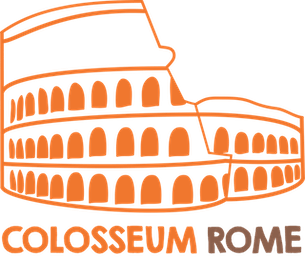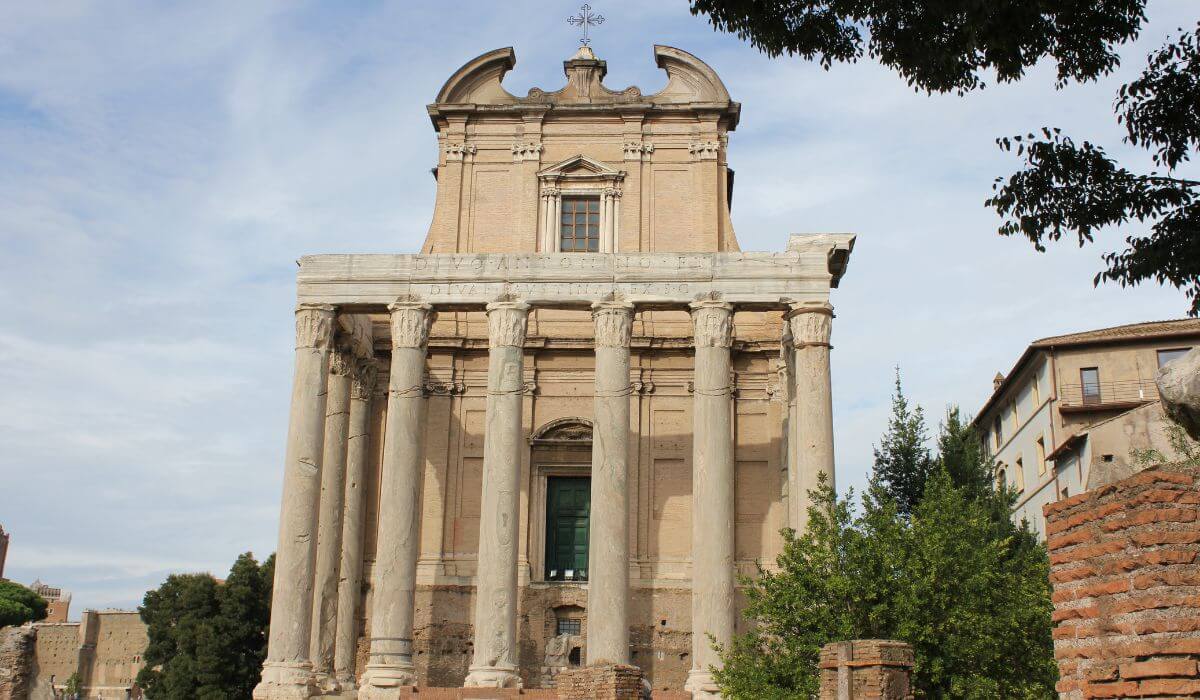
Church of San Lorenzo In Miranda In Rome: History, Tickets & Things to See
Planning to explore San Lorenzo in Miranda in Rome? This guide gives you all the essential info to visit this unique church built inside an ancient Roman temple. Find out how to visit the Church of San Lorenzo in Miranda in Rome, including how to get there, opening hours, and ticket details if you're joining a guided tour.
Located right in the heart of the Roman Forum, San Lorenzo in Miranda stands on centuries of history. Learn about the church’s transformation from a pagan temple to a Christian place of worship, and what makes it such a special hidden gem. Discover what to see inside, and make the most of your visit to San Lorenzo in Miranda in the Roman Forum!
Contents
- 1 How to Get San Lorenzo In Miranda Tickets – 3 Tours We Highly Recommend
- 2 San Lorenzo In Miranda Location & How To Get There
- 3 Best Time To Visit – San Lorenzo In Miranda Opening Hours
- 4 How San Lorenzo In Miranda Looks Today
- 5 Church Of San Lorenzo Miranda In Rome Interior
- 6 Side Chapels and Decorations
- 7 Associations and Guilds
- 8 Outside Look Chiesa Di San Lorenzo In Miranda
- 9 The History of the Church of San Lorenzo in Miranda Rome
- 10 Lorenzo in Miranda: The Saint and His Significance
- 11 Preservation and Restoration
- 12 Top Attractions near San Lorenzo In Miranda in Rome
- 13 Hotels near to the Roman Forum
- 14 FAQs
- 15 Conclusion
How to Get San Lorenzo In Miranda Tickets – 3 Tours We Highly Recommend
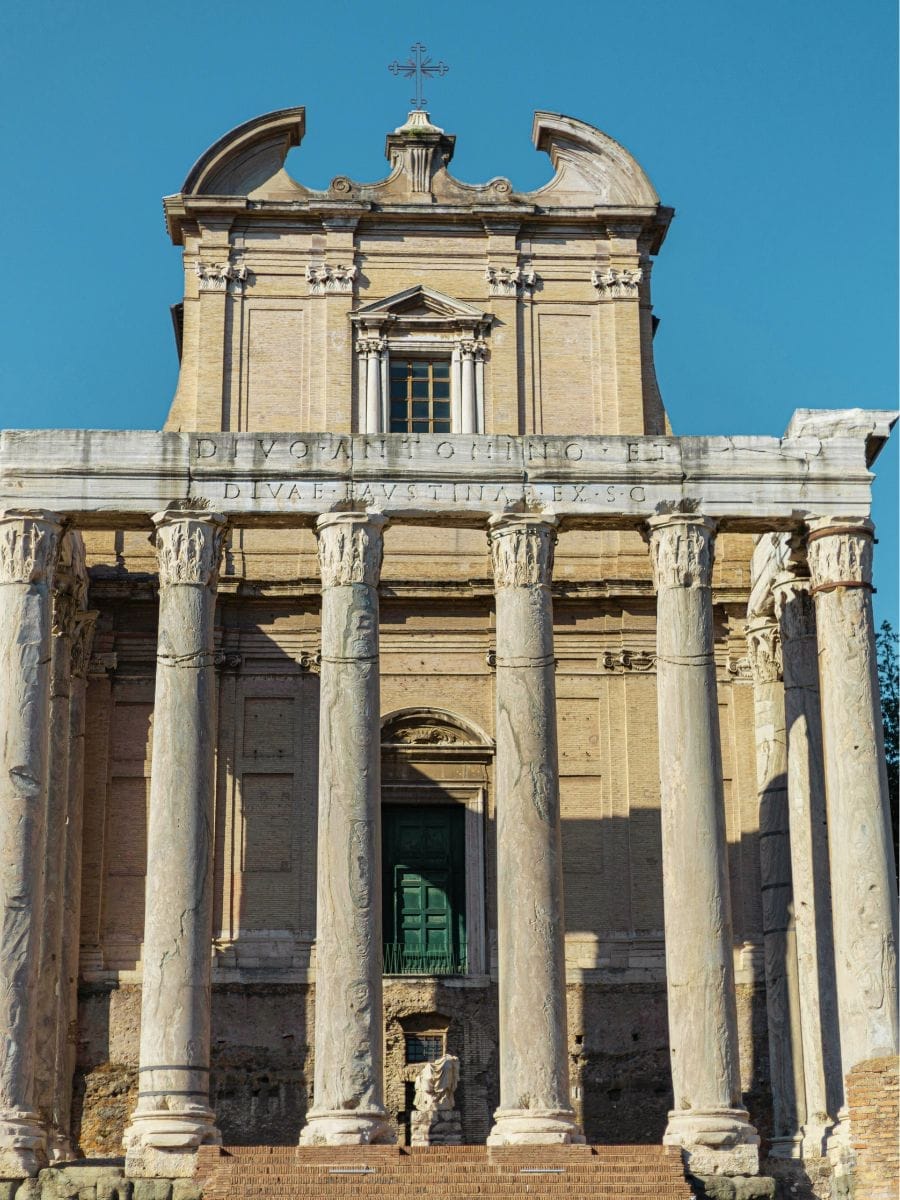
The Church of San Lorenzo in Miranda is not always easy to gain access to, but by taking tours that include the church, you avoid all those problems and get the best experience possible.
Here are our picks for the three best tours to take to see the Church of San Lorenzo in Miranda.
- Rome: Colosseum Guided Tour with Roman Forum and Palatine Hill – Taking around 3 hours, this comprehensive tour takes you around much of the Roman Forum, including the Colosseum and Palatine Hill. It’s a walking tour, and you enjoy the benefit of a tour guide to help you make the most of your experience.
- Rome: Colosseum, Roman Forum, Palatine Hill Entry Tickets – Another way to get access to San Lorenzo in Miranda, this lacks a guide to help you, but allows you to get tickets to all the sites in the area quickly and easily, and well worth it for a day exploring this amazing part of Rome.
- Tickets for Colosseum, Roman Forum & Palatine Hill: Priority Entrance – Another all-in-one ticket solution to gain access to the various attractions in the Roman Forum and the nearby monuments including the Colosseum and Palatine Hill. Saves you time and includes digital guides and priority access.
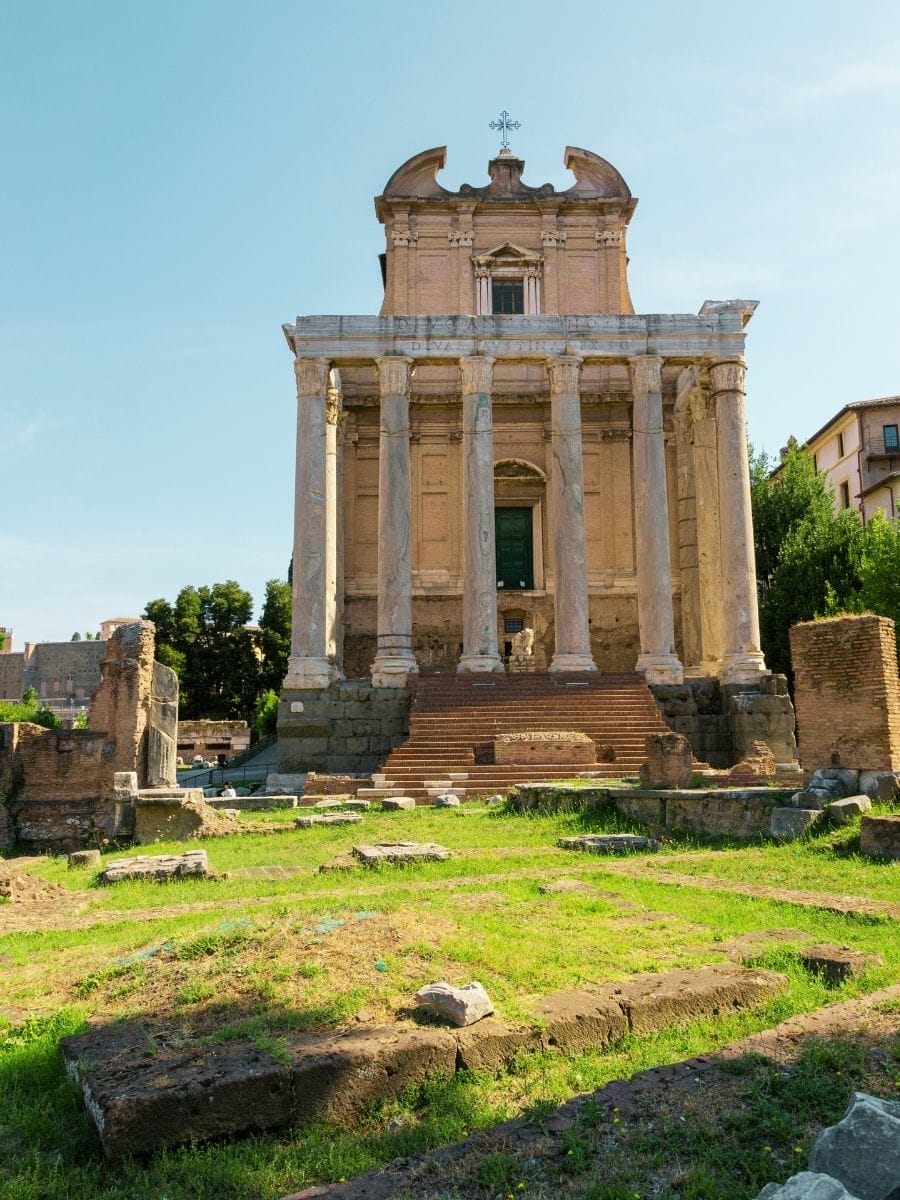
San Lorenzo In Miranda Location & How To Get There
The Church of San Lorenzo in Miranda is located within the Roman Forum (Forum Romanum, the historic center of ancient Rome) close to the major attractions including the Pantheon, Colosseum, and Spanish Steps. Its position within the Forum means you’ll need an entrance ticket to access it, so it’s best visited alongside other iconic landmarks like the Palatine Hill and the Forum’s temples.
The church sits directly on Via della Salara Vecchia, just a short walk from the Colosseum and the Arch of Titus. Its position within the Forum means you’ll need an entrance ticket to access it, so it’s best visited alongside other iconic landmarks like the Palatine Hill and the Forum’s temples.
Reaching San Lorenzo in Miranda is simple thanks to Rome’s central transportation network:
- By metro : You can use the Metro on either of the MEB and MEB1 lines, and get off at Colosseo station. From there, it’s a 5-minute walk to the Forum entrance.
- By bus : You can also use buses numbered 51, 75, 85, 87, and 117 to get there.
- On foot : If you’re exploring central Rome, the church is easily walkable from Piazza Venezia or the Capitoline Hill in under 10 minutes.
Tip : Because the Forum can get crowded, visiting early in the morning or later in the afternoon gives you the best chance to admire San Lorenzo in Miranda without the rush.
Best Time To Visit – San Lorenzo In Miranda Opening Hours
Dates | Hours |
30 March to 30 September | 9:00 AM to 7:15 PM (last entry 6:15 PM) |
1 to 25 October | 8:30 AM to 6:30 PM (last entry 5:30 PM) |
26 October to 31 December | 8:30 AM to 4:30 PM (last entry 3:30 PM) |
Access to the Church of San Lorenzo in Miranda is only possible when the Roman Forum is open. The Forum is open daily:
- 30 March to 30 September: 9:00 AM to 7:15 PM
- 1 to 25 October: 8:30 AM to 6:30 PM
- 26 October to 31 December: 8:30 AM to 4:30 PM
Last entry is one hour before closing. The Forum is closed on January 1st and December 25th.
How San Lorenzo In Miranda Looks Today

When you see the church of San Lorenzo in Miranda in the Roman Forum, the disparity between the ancient columns and the church that sits within them is very clear.
Temple's pillared portico is a defining architectural feature, showcasing the grandeur and historical significance of Roman temple design. It highlights the importance of the portico in understanding the building's history and its preservation.
The Roman temple columns are interesting in that there are deep grooves cut into them, which are believed to date from medieval modifications. Historians have speculated that these grooves could have been caused by ropes in an attempt to pull down and move the columns, or were perhaps where a makeshift fabric roof was attached. Some historians also believe that a makeshift roof may have been attached to the columns during the Middle Ages to protect or conceal parts of the structure.
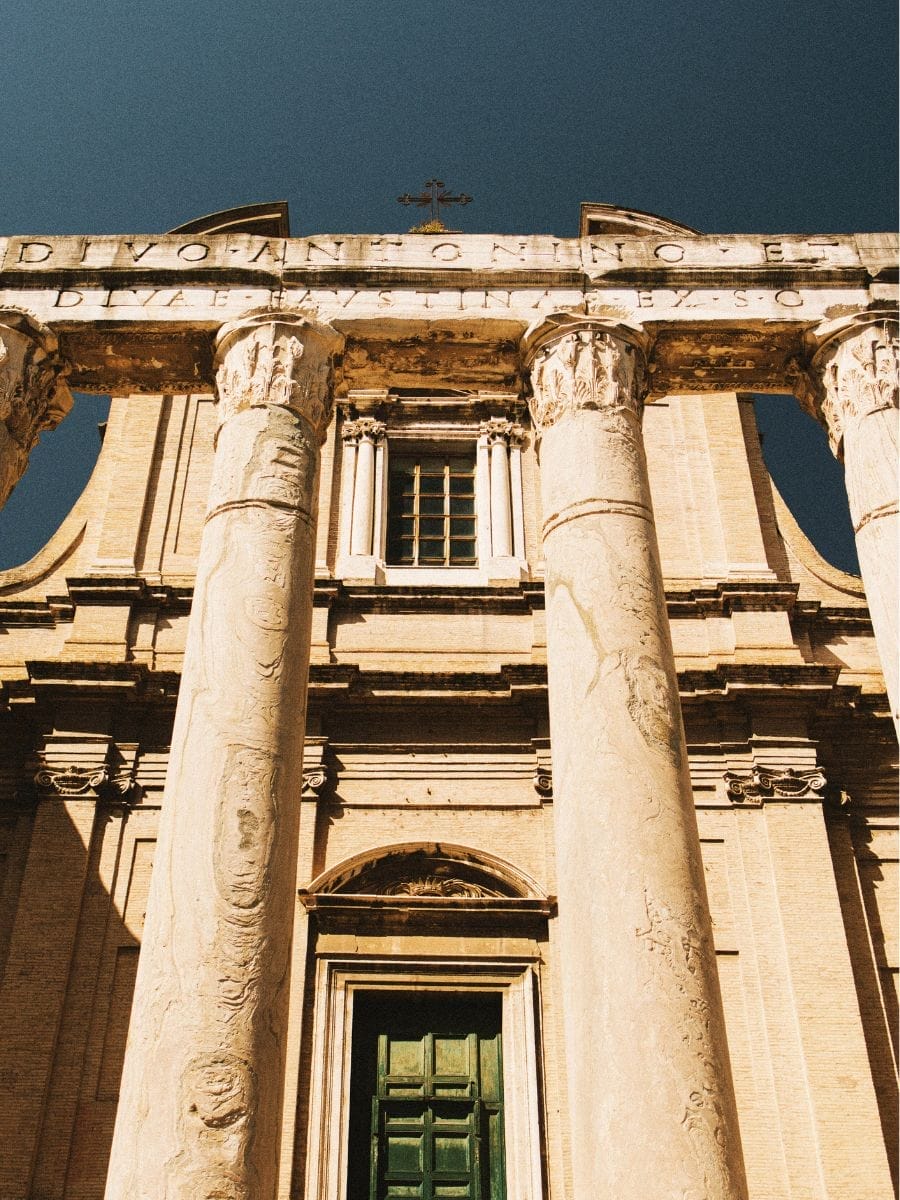
The church itself is classic baroque style, with the main entrance seemingly hovering in the air around 5 meters from the temple floor. This is the result of an 1801 excavation to uncover the remains of the temple, requiring significant excavation around the entrance area. The original bronze door of the temple is no longer present, which is a notable loss from the ancient structure.
This means that it is the rear of the church that is the only accessible point of entry if you visit the church of San Lorenzo in Miranda in the Roman Forum.
Church Of San Lorenzo Miranda In Rome Interior
The church of San Lorenzo in Miranda features a single nave with three chapels on each side, connected by arches and supported by pilasters, creating a harmonious and balanced interior layout. While the exterior of the church of San Lorenzo in Miranda is the striking reason that you may visit, seeing the Temple of Antoninus and Faustina itself is a real experience, the interior of the church is just as impressive.
Black marble columns adorn the chapels, note that the left hosts specific chapels and devotional objects, but the highlights beyond the beautiful intricate architecture are the main altar and high altar, which serve as central features. The paintings displayed here include:
- The Martyrdom of St Lawrence by Pietro da Cortona
- Madonna with Child and Saints by Domenichino
- Our Lady with SS Philip and James by Raffaelo Vanni
- and Annunciation by Alessandro Fortuna, among others
Side Chapels and Decorations
Stepping inside San Lorenzo in Miranda, visitors are greeted by a series of beautifully adorned side chapels that showcase the church’s rich artistic heritage.
The first chapel on the left, known as the Cappella Porfiri, is a highlight for art lovers. Here, you’ll find Domenichino’s evocative painting of the Madonna and Child with Saints Philip and James, completed in 1627. This masterpiece is a prime example of the Baroque style that defines much of the church’s interior, blending dramatic emotion with refined detail.
The side chapels on the right continue this tradition of artistic excellence. The second chapel features a striking Flemish-style altarpiece depicting the Beheading of John the Baptist, dating from around 1600. This work stands out for its vivid storytelling and rich color palette. Moving further, the third chapel on the right houses an Annunciation altarpiece by Alessandro Fortuna, adding to the diversity of artistic expression within the church.
Each chapel in San Lorenzo in Miranda contributes to the overall decorative scheme, seamlessly integrating with the ancient temple’s structure. The chapels not only serve as spaces for private devotion but also as showcases for the evolving tastes and talents of artists who have left their mark on this remarkable church.
Whether you’re admiring the first chapel or exploring the other side chapels, the blend of sacred art and ancient architecture makes every corner of San Lorenzo in Miranda worth discovering.
Associations and Guilds
San Lorenzo in Miranda is more than just a place of worship, it has long been a center for professional and intellectual life in Rome. Since the early 15th century, the church has been closely linked to the Collegio degli Speziali, or College of Chemists and Herbalists, officially known as the Universitas Aromatorium. This association began when Pope Martin V granted the church to the guild in 1429 or 1430, cementing a relationship that continues to this day.
The Collegio, now called the Collegio Chimico Farmaceutico, still occupies the premises adjacent to the church and retains St. Lawrence as its patron saint. Visitors can explore a small museum curated by the guild, which displays fascinating artifacts from its long history. Among the highlights is a book containing a receipt signed by the artist Raphael for medicines he received, a unique glimpse into the daily life of Renaissance Rome.
This enduring connection between San Lorenzo in Miranda and the Collegio degli Speziali underscores the church’s role as both a spiritual and scholarly hub. The presence of the Universitas Aromatorium has helped preserve the church’s legacy, making it a living monument to the intertwined histories of faith, science, and community in the heart of Rome.
Outside Look Chiesa Di San Lorenzo In Miranda

Despite its status as a must-see church, San Lorenzo in Miranda is easy to get a good view of as there is plenty of space around to see it all.
Originally, the temple was faced with white marble slabs and marble mouldings at the top and bottom, showcasing impressive craftsmanship. The marble facing and matching marble mouldings were largely removed or lost over time, but their historical presence is still evident in the architecture.
The large columns and interesting architecture stand out from other buildings in the area, making the Church of San Lorenzo in Miranda somewhere you can enjoy at any time.
The History of the Church of San Lorenzo in Miranda Rome

Visually striking, the church of San Lorenzo in Miranda Rome has been made famous as the church within a temple. The original structure was the Temple of Antoninus and Faustina, dedicated to divo Antonino (the deified Antoninus Pius) and divine Faustina, as indicated by the ancient inscription honoring divine Antoninus. Built in the second century by Emperor Antoninus Pius, the temple's origins reflect its imperial dedication and significance.
The massive columns of that temple now form a protective barrier around the church, the marble facings long gone, but still impressive. These temple's columns have survived various modifications, including a medieval attempt to dismantle or alter the portico during the Middle Ages, which left grooves and marks but ultimately preserved much of their original form. Efforts throughout history have focused on maintaining the temple's structural integrity despite these interventions.
It is not unique in being a church built within the walls of a Roman temple, but is by far the clearest and best example. The church lacks the usual eastern apse, which was never added in order to preserve the ancient structure of the temple.
During this period the columns and other structures found throughout Rome were recycled into new buildings, with many churches featuring this Roman architecture in their interiors. However, here the columns remain as they were, with the church built within, making it a direct descendent of earlier religious and architectural traditions.
The church of San Lorenzo in Miranda in Rome is not the first church at this location. The original church, known historically as San Lorenzo de Speziali or San Lorenzo de, was built inside the temple in the seventh century, during the Middle Ages, although nothing is left of that now. The church was officially named at the time officially denominated by Pope Martin V in the early 15th century. In the sixteenth century, the church was partially demolished and side chapels removed to restore the ancient temple, further integrating the two structures.
The church of San Lorenzo in Miranda Rome sees today was built in the seventeenth century by Orazio Torriani, who also carried out work on the façade for the ancient basilica on Tiber island. The name “Miranda” refers to “things worthy” of admiration or note, highlighting the site's remarkable view and historical significance. Later archaeological excavations have provided key insights into the site's layered history and architecture.
Lorenzo in Miranda: The Saint and His Significance
At the heart of San Lorenzo in Miranda is its dedication to St. Lawrence, one of Rome’s most venerated early Christian martyrs. St. Lawrence, or San Lorenzo, served as a deacon in 3rd-century Rome and is remembered for his unwavering faith and courage in the face of persecution. According to tradition, he was martyred by being roasted alive on a gridiron, a story that has inspired countless works of art and devotion.
The church’s dedication to St. Lawrence is deeply symbolic, reflecting the early Christian practice of transforming pagan temples into spaces honoring Christian saints and martyrs. This act signified the triumph of Christianity over the old Roman religions and established a new spiritual legacy within the ancient walls.
Inside San Lorenzo in Miranda, the story of St. Lawrence is brought to life in the main altarpiece, “The Martyrdom of St. Lawrence,” painted by Pietro da Cortona between 1636 and 1646. This Baroque masterpiece captures the drama and heroism of the saint’s final moments, serving as a focal point for worship and reflection. Through its art and architecture, the church continues to celebrate the enduring significance of St. Lawrence in the spiritual life of Rome.
Preservation and Restoration
Preserving San Lorenzo in Miranda is a complex task, given its unique position within the ancient temple of Antoninus and Faustina. Over the centuries, the church has faced the challenges of maintaining both its Baroque features and the underlying ancient temple structure.
Archaeological interest in the site began in earnest in the 19th century, with a major excavation in 1801 that first revealed the temple’s original entrance stairway. Later, in 1876, a substantial lowering of the ground level exposed even more of the ancient temple’s impressive architecture, allowing visitors to appreciate the scale and grandeur of the original Roman building.
Recent restoration efforts, particularly those initiated in 2011, have focused on safeguarding the temple’s structural integrity while preserving the church’s historical character. These projects aim to protect the ancient marble and stonework, stabilize the entrance stairway, and ensure that both the temple and the church remain accessible for future generations.
There is also ongoing discussion about integrating San Lorenzo in Miranda more fully into the tourist circuit of the Roman Forum and Palatine, balancing public access with the needs of the Collegio Chimico Farmaceutico, which continues to play a vital role in the site’s stewardship.
Thanks to these preservation and restoration initiatives, San Lorenzo in Miranda stands today as a testament to Rome’s layered history, a place where the ancient temple and the Baroque church coexist, inviting visitors to explore the city’s remarkable journey from antiquity to the present.
Top Attractions near San Lorenzo In Miranda in Rome

Sitting in the Roman Forum, when you visit the church of San Lorenzo in Miranda, you are at the heart of the incredible history of this amazing city.
From the steps of San Lorenzo in Miranda, you can enjoy a wonderful panorama of the Roman Forum, offering breathtaking views that highlight both the historical and visual significance of this remarkable site.
There are so many other attractions nearby you are never short of something to do, but we’ve picked out some highlights to really make it a special day out exploring Roman history.
- Colosseum : No trip to Rome is complete without a visit to the Flavian Amphitheater, better known as the Colosseum. It’s just a short walk from San Lorenzo in Miranda and remains the most impressive historic building we can explore today, whether in Rome or anywhere else in the world. Around two thousand years old, it stands as testament to the ingenuity of its builders, and apart from touring this amazing building, there are often fairs and events held within its walls to enjoy.
- Palatine Hill : Overlooking the Forum, Palatine Hill is filled with ruins, gardens, and stunning views. According to legend, this is where Rome was founded, making it a fascinating stop for history lovers.
- Piazza Venezia & Vittoriano Monument : A few minutes away is Piazza Venezia, home to the huge white Vittoriano monument. Climb to the top for amazing city views and enjoy the busy energy of this central square.
- Capitoline Hill & Museums : Sitting above the Forum, Capitoline Hill features Michelangelo’s famous piazza design and the Capitoline Museums. Inside, you’ll find incredible Roman art and statues, while outside you get perfect photo spots.
- Trajan’s Forum & Market : Explore the remains of Trajan’s Forum and Market, once a busy shopping and political center. The grand Basilica Ulpia, located within the forum, was one of ancient Rome’s largest and most magnificent basilicas, used for administration and justice. Walking through the ruins gives you a real sense of daily life in ancient Rome.
- Piazza del Campidoglio : Another highlight on Capitoline Hill is this beautiful square designed by Michelangelo. With elegant steps, grand buildings, and the statue of Marcus Aurelius, it feels like stepping back into Renaissance Rome.
- Via dei Fori Imperiali : This wide avenue connects Piazza Venezia to the Colosseum, lined with ruins of the Imperial Forums. It’s especially magical at sunset when the ancient stones glow in the golden light.
- Trevi Fountain : About a 25-minute walk from the Church of San Lorenzo in Miranda, Trevi Fountain is a part of the ancient Vergine aqueduct, which is still in use today. Probably the best known of the Roman fountains, it is a nice change of pace from exploring ancient buildings. Not only beautiful, the fountain is a social space, where you can watch the busy life of Rome go by as you enjoy the energy of the city.
- The Pantheon : Another world-famous piece of history, the Pantheon has been a consecrated church since 609, and remains in active use to this day. Wonderful architecture and beautiful interiors, along with a wide range of paintings and artifacts from its long history make this a fantastic place to slow down, relax and just soak in the surroundings. There are audio guides or an app that ensure you don’t miss anything on your time in the building.
With San Lorenzo in Miranda at the center, you’re surrounded by history, culture, and unforgettable views in every direction.
Hotels near to the Roman Forum
Getting accommodation close to all the sites really makes things much easier when visiting Rome, here are three we recommend:
- Residenza Roma Imperiale – Offering great accommodation, superb service, and useful extras such as bike hire, this hotel is just a 2-minute walk from the Roman Forum, so within easy reach of San Lorenzo in Miranda.
- Roma Five Suites – Just a few minutes from the Church, this is a modern hotel with subtle style, great food and more. Definitely, one to consider, they offer both traditional Italian and continental breakfasts, so you always start your day the right way.
- La Calla al Colosseo – An apartment with its own garden area to enjoy the evenings under the stars, this accommodation is just a minute away from the Colosseum itself, and within easy walking distance of the Church of San Lorenzo in Miranda. You have the freedom of your own place with the convenience of the location, the perfect spot for those who like to live to their own timetable.
FAQs

How old is San Lorenzo in Miranda in Rome?
The original structure of the Temple of Antoninus and Faustina dates from around the second century, with the church itself constructed in the early seventeenth century, making it around 600 years old.
Who built San Lorenzo in Miranda?
The Church was built by Orazio Torriani, a prolific architect of the era who was involved in numerous projects around Rome.
Do I need tickets to see San Lorenzo in Miranda?
No, you can see the church any time, although you cannot gain entrance to the interior any longer.
Conclusion
As a unique example of the church within a temple idea, the Church of San Lorenzo in Miranda is both an interesting historical piece and a wonderful example of architecture.
Including both Roman era construction and the birth of modern Rome, it is a bookmark in time that shows how those two worlds come together. A must-visit if you travel to the Roman Forum, it is an essential and fascinating part of your tour of Rome.
Fanny, an ardent admirer of ancient history and architecture, has been fascinated by the Colosseum since her first visit to Rome in 2012. As a key contributor to the Visit Colosseum Rome blog, she brings her passion for the Roman Empire’s monumental legacy to every article and guide.
